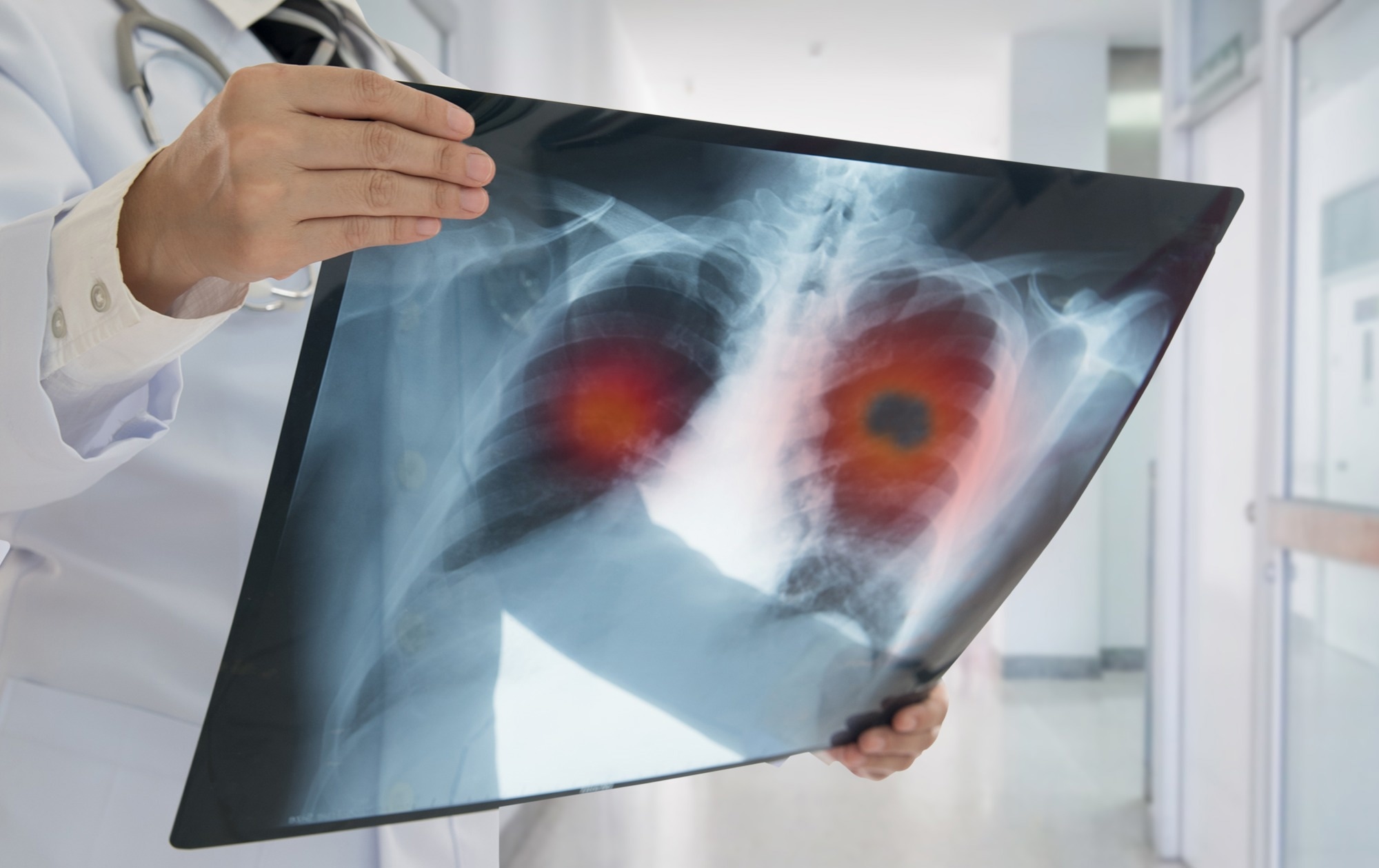Recent research by a team of scientists at The Francis Crick Institute, presented at the European Society for Medical Oncology (ESMO) Congress 2022 in Paris, reveals a link between air pollution and lung cancer in non-smokers. The research was funded by Cancer Research UK and is part of the TRACERx Lung Study, which aims to understand the onset and progression of lung cancer.
 Study: Scientists reveal how air pollution can cause lung cancer in people who have never smoked. Image Credit: create jobs 51/Shutterstock
Study: Scientists reveal how air pollution can cause lung cancer in people who have never smoked. Image Credit: create jobs 51/Shutterstock
Background
While smoking continues to be the major risk factor for lung cancer, approximately 6,000 people in the United Kingdom with no history of smoking succumb to lung cancer every year. Some of these incidences of cancer could be linked to air pollution.
A variety of respiratory diseases, such as asthma and chronic obstructive pulmonary disease, as well as cardiac diseases and dementia, have been connected to air pollution. In 2019, around 300,000 lung cancer-related mortalities were attributed to particulate matter in the air. However, the role of air pollution in triggering cancer is unclear, and there is no evidence of air pollution causing mutations in deoxyribonucleic acid (DNA).
About the study
In the present study, a team of scientists led by Professor Charles Swanton of the Francis Crick Institute explored epidemiological data from the United Kingdom and Asian countries to find correlations between levels of particulate matter in the air and lung cancer risk in individuals who have never smoked.
Given the absence of any DNA mutational signature in the lung cancer genomes of non-smoking individuals, the researchers believe that the environmental carcinogens in the air are causing lung cancer without causing DNA mutations. The team examined the role of air pollution in triggering lung cancer by exposing mice models to different pollution levels.
Furthermore, they used mice models with epidermal growth factor receptor (EGFR) and Kirsten rat sarcoma viral oncogene homolog (KRAS) mutations in their lungs to understand the mechanisms of how exposure to particulate matter with 2.5 µm diameter (PM2.5) triggers lung cancer.
The researchers also used epidemiological data to compare EGFR mutation rates in areas with different PM2.5 levels in the air. Mutations in the EGFR gene are predominant in lung cancer in non-smokers.
Results
The study found a strong correlation in the epidemiological data between PM2.5 exposure and lung cancer in non-smokers in the United Kingdom, South Korea, and Taiwan. Exposing mice models with EGFR and KRAS mutations to different levels of air pollution also showed an increase in the number, size, and grade of cancers in the mice after exposure to pollution.
Furthermore, the results showed that exposure to PM2.5 released Interleukin 1β in the lung epithelial cells, which causes lung inflammation. The interleukin 1β transforms epithelial cells with pre-existing EGRF or KRAS mutations into pseudo-stem cell-like progenitors, initiating tumor formation.
Biopsies of normal lung tissue also revealed that EGFR and KRAS mutations exist in over 50% of normal lung samples. The authors believe that EGRF, KRAS, and other cancer-driving mutations are ubiquitous in lung tissue and accumulate with age. Additionally, comparisons using epidemiological data indicated a greater incidence of EGFR mutant lung cancer and other types of cancer among people who lived in areas with high levels of PM2.5 in the air.
Conclusions
In summary, the study links high levels of PM2.5 in the air with incidences of lung cancer in people with no smoking history. According to the authors, an accumulation of cancer-causing mutations in the cells is a normal aging process, and these mutations remain mostly dormant. Exposure to environmental agents such as PM2.5 stimulates the release of interleukin 1β, which results in inflammation in lung epithelia and triggers cells with carcinogenic mutations like EGFR and KRAS mutations to initiate tumor formation.
The authors believe that the findings of this study could help understand the role of inflammation in the early stages of various other cancers, especially in the absence of mutagenic signatures. The study's outcomes could also lead to better methods to reduce PM2.5 triggered inflammation in lung epithelia and treat lung cancer in individuals who have never smoked.
Although the risk of lung cancer associated with tobacco use is much higher than air pollution-related lung cancer, almost 95% of the global population is exposed to pollution levels that the World Health Organization considers unsafe. Therefore, this improved awareness of the mechanisms behind air pollution-related lung cancer in non-smokers highlights the pressing need to reduce air pollution levels.